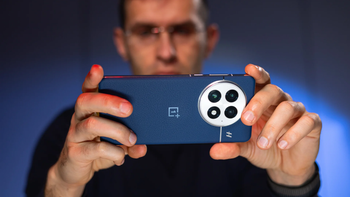Trump's explanation why he blocked Huawei from U.S. supply chain will have you shaking your head

Huawei has not had a good week. It started exactly one week ago today when President Donald Trump used an executive order to declare a national emergency against U.S.technology. At the same time, Huawei and 68 affiliates were placed on the Commerce Department's Bureau of Industry and Security (BIS) Entity List. This prevents Huawei from obtaining U.S. parts and components unless a license is issued by the U.S. Government.
So the future of the company that was set to become the largest smartphone manufacturer in the world next year is up in the air. A number of times last week we wondered whether the real reason for Huawei's placement on the Entity List was to use the company as leverage in the U.S.-China trade war. And that was confirmed today by none other than President Donald Trump himself. A video posted by C-SPAN (via The Verge) shows remarks Trump made today to a reporter after announcing a $16 billion aid package for farmers affected by the trade war.
When a reporter asked the president about Huawei, he first says, "Huawei is something that’s very dangerous." He adds that "from a military standpoint, it’s very dangerous." He goes on to say that the company could be used included in a trade agreement with China. "So it’s possible that Huawei even would be included in some kind of a trade deal. If we made a deal, I could imagine Huawei being possibly included in some form, some part of a trade deal." The reporter asks the president how that would look and Trump replied, "It would look very good for us." But Trump then changes his tune again. "Oh, it’s too early to say. We’re just very concerned about Huawei from a security standpoint."
There is still hope for Huawei if both countries can reach a trade agreement
So it turns out that Trump has two reasons for punishing Huawei. One is the security issue and the second, as we surmised, is to use the company as a bargaining chip in the trade war. This technically could be good news for Huawei because if both sides agree to a new trade deal, the company could be off the hook. But then again, who knows what is in Trump's mind? This is the man who announced in July 2017 that Apple CEO Tim Cook had told him that Apple was going to build in the states "three big plants, beautiful plants." Apple had no idea what Trump was talking about.
Another, perhaps more relevant example occurred last year when fellow U.S. national security threat ZTE was crippled by an Export Ban that prevented the company from sourcing parts from the U.S. The same man who continually threatened China during his presidential campaign for stealing jobs from the U.S. sent a tweet complaining that the Commerce Department ban was resulting in "Too many jobs in China lost." Trump demanded that the Commerce Department work out a deal with ZTE and that is exactly what happened.
Huawei, of course, hopes that it is merely a pawn in the trade war and that once a deal is reached between the two countries, it can return to the path that had it surpassing Samsung at the top of the global smartphone industry next year.
You can watch the comments on the video at the top of the story. The relevant part starts about 41 minutes into the video.
Follow us on Google News












Things that are NOT allowed:
To help keep our community safe and free from spam, we apply temporary limits to newly created accounts: